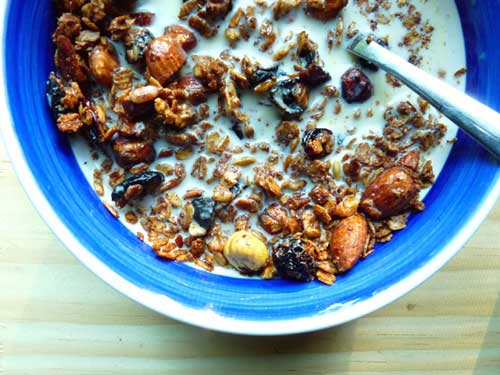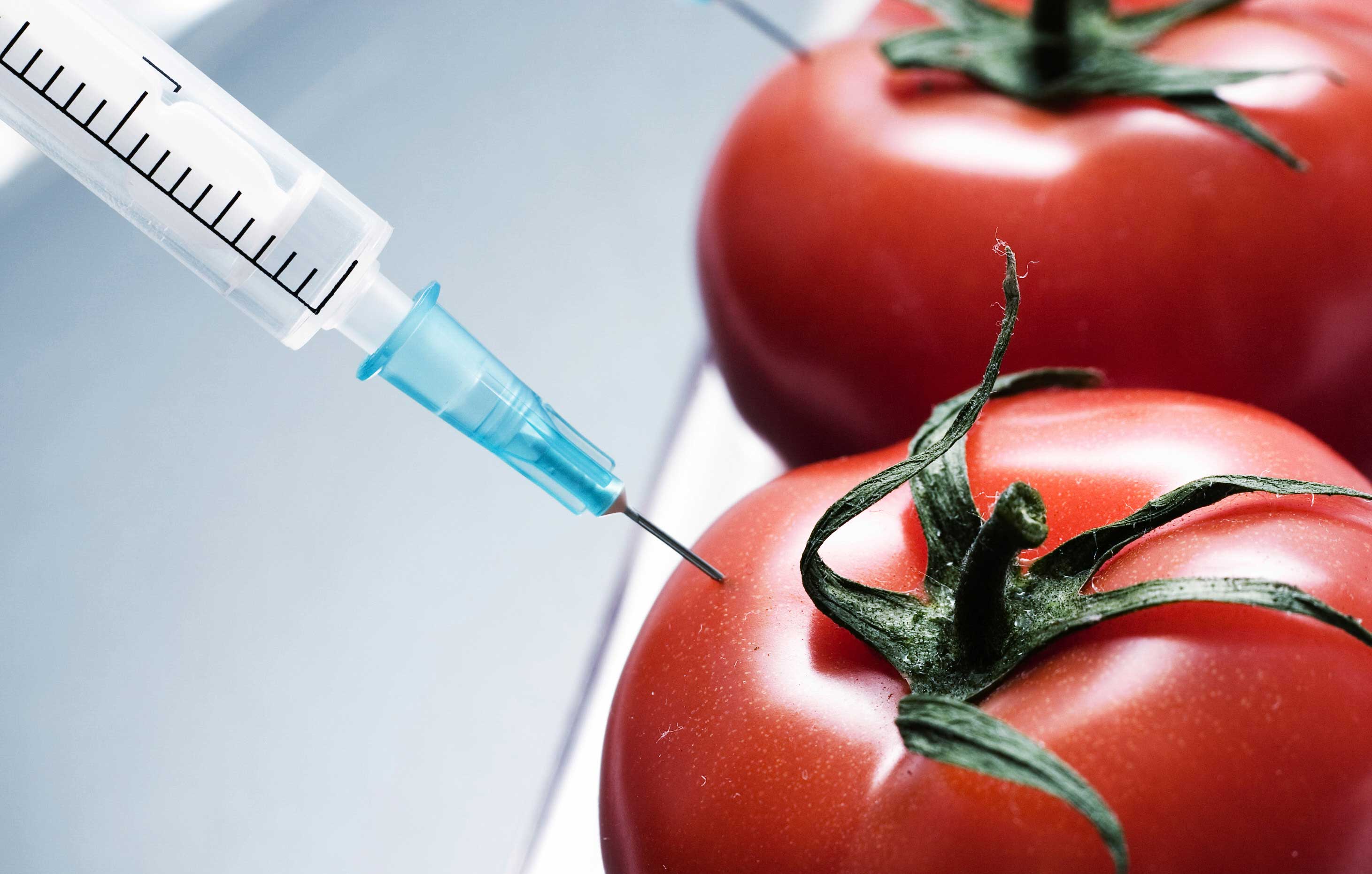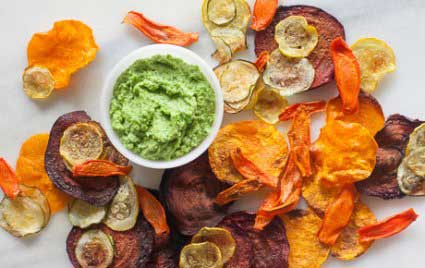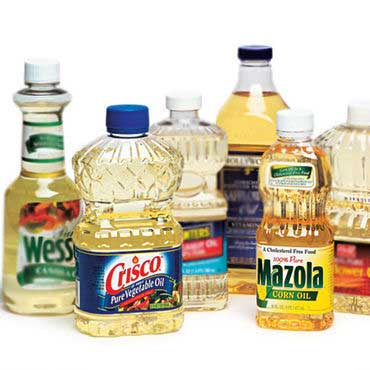
7 Foods You Need to Break Up With
With an ever-growing awareness of our health, it's exciting to see how much the landscape in the food industry has changed since our parents' generation. Now we demand to know what's in our food and understand its benefits or lack there of. With so much research at the common (wo)man's fingertips and a skyrocketing demand for nutritious and wholesome foods, health is more of a priority than ever. But with so much knowledge and fad diets out there, sometimes it's hard to cut through the noise to the truth. Is soy good or bad? Should I be eating more fats or less? How important is it that my produce is organic? And all of these non-gmo, bha-free, paraben-free... definitely don't want those, but what even are they? Sometimes walking down the grocery aisle can be a headache. In addition, cleverly marketed labeling can really mislead and deceive us. The biggest bad guys out there have been unmasked, but here are seven foods that you may not realize are doing more harm than good:

AGAVE
Many people believe agave is healthy because it's "natural" and considered "low-glycemic." In actuality, agave syrup is a highly processed sweetener. The chemical process agave undergoes during manufacturing converts it into 70%+ pure fructose. What's wrong with fructose? In the small amounts contained in fruit, fructose doesn’t do much damage. But in large, concentrated amounts, it can cause real health problems like liver damage, obesity, and other health issues. Considering that high fructose corn syrup contains only 55 percent fructose and wreaks havoc on our health, imagine what agave can do.

PROTEIN BARS
Protein bars may be the perfect snack to keep in your bag for a low blood sugar moment, but they can be loaded with excess sugars and chemicals. It would be impossible to claim that all protein bars are unhealthy of course, but a good rule of thumb is to ignore the packaging on the front and check out the fine print listed on the nutrition label. You may shocked. If you strip it of its label, a lot of protein bars are just candy bars - highly processed and packed with artificial ingredients and fillers. How many grams of sugar are in it? Do you recognize and can you pronounce the names of the ingredients? We recommend trying our Perfect Bars, Evo Hemp Bars, RXBars, Larabars, Juno Bars, or simply making your own!

FLAVORED FAT-FREE YOGURT
Yogurt dominates the dairy sections at most grocery stores these days. It's getting harder to find more traditional dairy items like cottage cheese and sour cream amidst the rows and rows of yogurt options. Be careful here and don't fall into the fat-free trap. Just because something is fat-free doesn't make it healthy. In fact, many flavored yogurts have upwards of 15 grams of sugar in that tiny 6-ounce serving! Yogurt does have many benefits, but unfortunately most grocery stores offer flavored yogurts that are packed with artificial sweeteners and flavors. Plain greek yogurt or plain goat milk yogurt is the way to go - they maintain all the good protein and probiotics that make yogurt beneficial. You can always spice it up with cinnamon (an anti-inflammatory spice), fresh berries, and a light drizzle of honey that way you're the one in control. Your body will thank you.

GRANOLA & DRIED FRUIT
Packed with rolled oats, nuts, and dried fruits, granola seems like such a healthy choice. What is misleading though is how much sugar and extra calories are lurking in granola. A bowl of this stuff can easily contain 500 or more calories without milk or yogurt. And although dried fruit does contain fiber, vitamins, and minerals, many companies add sulfur and sugar to make it better for store shelves. Indulge smartly by choosing high-fiber varieties with low sugar and stick to the recommended portion size on the label. Or better yet, make you're own! This is one of our favorite homemade granola recipes: Banana Bread Granola

GMOS
Genetically modified organisms (GMOs) are living organisms whose genetic material has been artificially manipulated in a laboratory through genetic engineering. This relatively new science creates unstable combinations of plant, animal, bacteria and viral genes that do not occur in nature or through traditional crossbreeding methods. GMOs are now present in 75-80% of conventional processed food in the U.S., according to the Grocery Manufacturers Association. You will not find GMOs included on your food labels because manufacturers aren't required to disclose their usage. Even though polls consistently show that a significant majority of Americans want to know if the food they’re purchasing contains GMOs, the powerful biotech lobby has succeeded in keeping this information from being clearly presented to the public. Since our country has such a short history of eating GMOs, it amounts to a large public health experiment with you as the subject. Independent rodent studies show startling health effects in rats fed GMO foods including smaller organs, damaged immune systems, decreased immunity, liver atrophy, and many others. If you want to know where GMOs are most likely to show up in your food, check out The Non-GMO Project's list here: Where Do GMOs Show Up In My Food?

VEGGIE CHIPS
Whether they're baked or fried, the actual pieces of vegetables in veggie chips are so thin and processed that most of the nutrition from the original vegetable is gone. You're much better off eating raw veggies instead with a clean dip like guacamole or hummus!

OMEGA-6 FATTY ACIDS
Omega-6 fatty acids stimulate a pro-inflammatory pathway whereas omega-3 fatty acids promote an anti-inflammatory pathway in our bodies. Although both responses are needed for good health and healing, the Standard American Diet is noted to contain 20x more omega-6 than omega-3. Experts agree that chronic disease related to inflammation starts when omega-6 to omega-3 ratios are greater than 6:1. Our bodies are not designed to handle the current ratios, and the result is an increase in chronic health concerns with inflammation as the root cause.
Omega-6 fatty acids are ample in our diets and can be found in high levels in many foods like processed vegetable oils (canola, sunflower, and grapeseed oils) as well as boxed foods with long shelf lives like crackers, cookies, and similar pantry items. Additionally, processed meats and farmed fish are all higher in omega-6 content. Mono-unsaturated fats and omega-3 fats are better choices. Olive oil, fish oil, and flaxseed oil are especially good for decreasing inflammation. Other examples of omega-3 fatty acids are walnuts, edible seeds, flax, dark leafy greens, grass fed meats, marine products, hemp, and eggs that have been supplemented with a diet rich in omega-3.
What foods are on your no-no list? We'd love to learn about your food dos and don'ts! Let us know in the comments below.
Thank you to our helpful sources!
SHOP THE LONG & LEAN COLLECTION
If you liked this blog, check out our other blogs like: "Indulge: 3 Summer Recipes from Kathryn Budig," "Resources for the Foodie," and "Routines & Schedules: Why Something That Sounds Boring Is Powerful."


